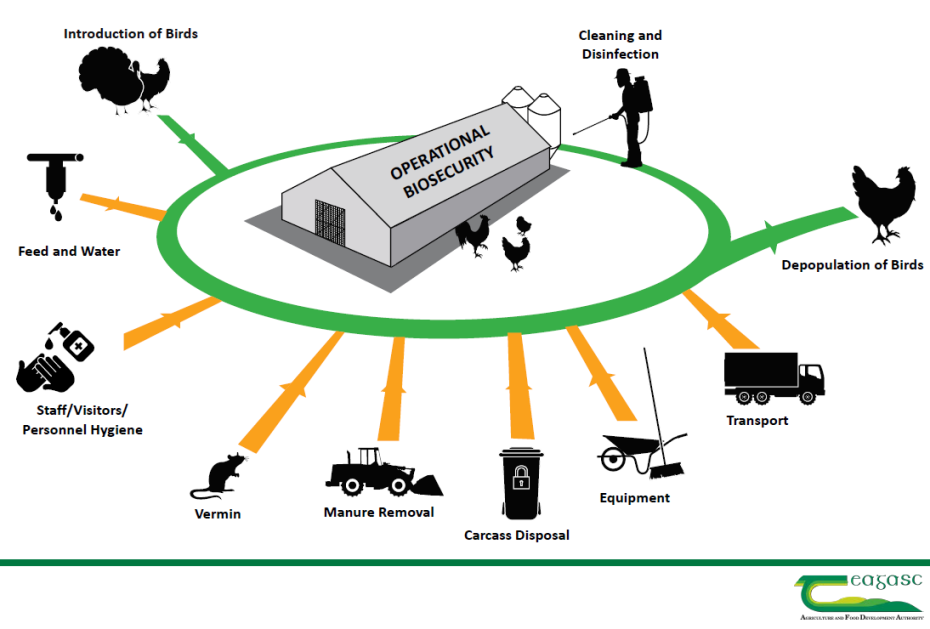According to the European Centre for Disease Prevention and Control (ECDC), a total of 1,672 cases of highly pathogenic avian influenza virus have been reported from 24 EU countries, including the UK, with 41 cases reported from captive birds. The highest number of outbreaks was in Poland, where 297 outbreaks were reported from densely populated poultry areas. In contrast, Germany and Denmark reported the largest number of outbreaks from wild birds, with a combined total of 603 detections.
According to the European Centre for Disease Prevention and Control, this outbreak of avian influenza could lead to a pandemic if the virus is transmitted from human to human. Furthermore, humans may not be able to protect themselves from the new strain of avian influenza due to lack of antibodies to the new strain. This is why coordination between public health and agriculture is essential for the effective implementation of control and response measures. It is vital to know the status of avian influenza in order to prevent further infections.
The latest update to the Avian Influenza overview report by the European Centre for Disease Prevention and Control highlights the recent changes in the spread of avian influenza in different regions. This new outbreak of avian influenza is likely to affect a variety of wildlife species, including domestic and wild birds. The manual also details the methods used to detect and confirm the infection, including satellite telemetry, colour marking, and ringing.
In addition to avian influenza viruses, a new strain of human-borne avian influenza has been detected in a handful of countries, including the UK and Germany. As the disease continues to spread throughout northern Europe, authorities in Germany have decided to cull over 70,000 chickens and over 3,000 turkeys to combat the spread of bird flu. This disease has also led to the culling of more than 30,000 turkeys in Sweden.
The European Center for Disease Prevention and Control has updated its Avian Influenza Overview report to provide updated information on the spread of the virus in various areas. This report describes the spread of avian influenza in different regions and explains how the virus has adapted to different habitats. The EU is also affected by this disease in many countries. Site fisioterapiafatimafontenla.com

warns that although the disease is not endemic to humans, it can still be dangerous to poultry. In the meantime, it is important to follow EU guidelines for poultry farmers.
The European Center for Disease Prevention and Control publishes an Avian Influenza Overview Report quarterly to provide up-to-date information on the spread of avian influenza. The report identifies new cases of avian influenza in birds and explains the dynamics of the disease in humans. In the EU, the disease is spread by contact between wild birds and chickens. Some countries have already reported human cases of avian influenza, but the rest of the world is not yet completely affected.
The European Centre for Disease Prevention and Control has updated the Avian Influenza overview report. The current situation in the EU has a high incidence of avian influenza in poultry. As the disease spreads, the EU needs to develop an effective strategy to protect its poultry from the virus. In this regard, it is vital to understand the latest updates in avian influenza. For this reason, the report is important for both farmers and poultry producers.
The "Avian influenza overview" report is issued quarterly by the European Centre for Disease Prevention and Control (ECDC). It contains information on the status of avian influenza in 17 EU countries and the UK. The reports describe the evolution of avian influenza viruses in different regions of the world. The reports are also useful in assessing the risks of avian influenza to humans. These updates are crucial in preventing bird flu in farm animals.
The ECDC's "Avian influenza overview" report is published quarterly. It contains an updated analysis of the current status of avian influenza in 17 EU countries, including the UK. During this time period, a total of 162 cases of HPAI virus was reported in the EU. The HPAI virus can infect poultry, wild birds, and captive birds. Affected regions may need to reduce their production to contain the virus.